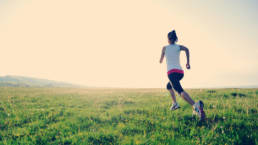Sit Less and Move More!
Office workers are one of the most sedentary occupational groups whereby most of them spent over 75% of their working hours being deskbound. Research has shown that an average office worker spends approximately 80,000 hours in sitting position over the course of their career journey. It is noteworthy that sitting has its benefits from a productivity and biological aspect as it allows sufficient rest for the body and provide stabilization for detailed and focused tasks. However, we all know that sitting for a long period of time draws in a host of negative consequences to our health.
Why is sitting so bad?
The majority of literature evidence assessing the negative consequences of prolonged sitting revolves around musculoskeletal functions, whereby the system undergoes repetitive overuse and lead to what we call work-related musculoskeletal disorder. Evidence has shown that it is certainly not uncommon that musculoskeletal disorders account for a significant proportion of work compensation and workplace sick leave cases in Australia, with an estimate of 50% from computer users.
Consequently, this has adverse impact on the employee’s overall wellbeing, motivation, productivity and morale, as well as on the workplace culture.
Humans as designed to move! As the saying goes “use it or lose it”.
Sitting in a chair for an extended period of time takes a heavy toll on your health. This is when your muscles are ‘asleep’, your spine is rigid, cells and tissues in your body are not receiving pumps of nutrients from blood circulations, as well as not being able to remove waste products effectively.
Eventually the negative impacts extend to potential association with mental wellbeing issues, work stress and fatigue, cardiovascular diseases, diabetes mellitus, increased body mass index and the list goes on.
Nowadays, people are more aware of the service availability of Occupational Therapists that provide comprehensive ergonomic assessments focusing on evaluation of positioning of computer accessories, working posture, work behavior and injury prevention. Unfortunately, it defeats the purpose of having a perfect ergonomic workstation if you are not moving enough throughout the day. Current Occupational Health and Safety guidelines advocate the importance of adopting a variety of postures and taking breaks throughout the day.
Here are some ideas to move more in the office:
Take the stairs
Put the bin further away so that you get up and walk
Stand during meetings
Walk to your colleague’s desk instead of sending emails
Walk to a farther toilet
Have lunch away from desk
Try a standing desk
Stand up when using the phone
Set a reminder to stretch every 30 minutes
Turn waiting time into moving time – Printing documents, heating up food, boiling water, waiting for the bus
If you are interested in Ergonomic Assessments please contact our business development manager at rory@perthwellness.com
Related Posts
How Chiropractors Help Athletes Pt. 1
17 October 2016
Sports Chiropractic provides care in the conservative management, rehabilitation or optimization of the neuromuscular system for the athlete to recover from injury and/or better performance. In Australia, sports chiropractic has been established for over 30 years.
0 Comments3 Minutes


